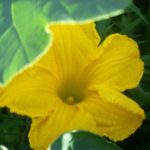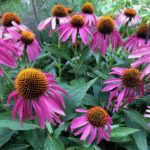New Moon Greetings – October 21, 2025
 Like many people, I was deeply saddened to hear that Jane Goodall had died earlier this month. She has been such a light in the world and we need all the illumination we can get right now. Following her death, a lot of the media focused on her work with chimpanzees and her tireless environmental advocacy. I’d like to share with you just a few things that weren’t highlighted as much and what we could learn from her life to honor her legacy.
Like many people, I was deeply saddened to hear that Jane Goodall had died earlier this month. She has been such a light in the world and we need all the illumination we can get right now. Following her death, a lot of the media focused on her work with chimpanzees and her tireless environmental advocacy. I’d like to share with you just a few things that weren’t highlighted as much and what we could learn from her life to honor her legacy.
Her Mother Accompanied Her to Gombe

Goodall began her work in the Gombe Stream Game Reserve (later to become Gombe National Park) in 1960. At that time it was not considered proper for a young single woman to be doing field work. She needed a chaperone and her mother Margaret agreed to accompany her. The camping was primitive, supplies were brought in by boat, communication with the outside world was limited. It was Jane’s dream to be there, not her mother’s. Yet her mom (a writer) went along, kept the camp in order, and supported her daughter with her early work. I’ve always been fascinated by this part of the story.
Early Criticism
 Everyone knows Goodall now as a brilliant scientist who has advanced our understanding of animal behavior and the environment. But what sometimes gets lost in the re-telling is her determination and courage in the face of criticism at the beginning of her career.
Everyone knows Goodall now as a brilliant scientist who has advanced our understanding of animal behavior and the environment. But what sometimes gets lost in the re-telling is her determination and courage in the face of criticism at the beginning of her career.
Before Goodall began her research, Western scientists designated only humans as “tool makers”. They also did not think that other species could have deep relationships, or familial and friendship bonds. One could make the case that indigenous people and those living close to the natural world have always known these things, but western scientists ignored that wisdom.
Goodall turned the Western science outlook on its head. In 1961 she discovered chimpanzees making tools (using blades of grass to fish termites out of a hole). She also reported on the close caretaking family relationships and unique personalities she was observing. Many traditional scientists (most of them men) questioned her work. They said she was young, untrained, and did not know what she was doing. But she persevered.
Advocating for All Beings
Goodall’s early career was focused on the research in Gombe but at some point she became aware of the fate of chimpanzees used in animal research. And from there, to the terrible treatment of animals in many venues – puppy mills, factory farms, illegal wildlife trade, and trophy hunting. Her advocacy along with others helped end medical research on chimpanzees and establish sanctuaries for abused chimps to live out their lives in peace.
She also promoted vegetarianism and abolishing factory farms. And she served on the board of the Nonhuman Rights Project which works to establish legal personhood for animals. These last items are not often reported in the mainstream media as they are not popular ideas. But they are logical conclusions to Goodall’s understanding that other species have emotions, form social bonds, and share many traits with humans. They have a right to simply BE in the world without abuse from humans.
Insistence on Hope
 If you’ve seen any of the interviews with Jane Goodall since her death you know that her central message was about hope. She noted the resilience of nature, her belief in young people, and the human spirit as her reasons to remain hopeful. It is interesting to me that she does not mention action, because if you look at her life, her hope is based on action. At every step of her career she has taken action. She started the Roots and Shoots program in Tanzania in 1991. It is a program that inspires young people to take action in their communities on environmental and humanitarian issues. She has traveled tirelessly, working with young people and educators around the world to promote that vision.
If you’ve seen any of the interviews with Jane Goodall since her death you know that her central message was about hope. She noted the resilience of nature, her belief in young people, and the human spirit as her reasons to remain hopeful. It is interesting to me that she does not mention action, because if you look at her life, her hope is based on action. At every step of her career she has taken action. She started the Roots and Shoots program in Tanzania in 1991. It is a program that inspires young people to take action in their communities on environmental and humanitarian issues. She has traveled tirelessly, working with young people and educators around the world to promote that vision.
Honoring Jane Goodall’s Memory
 One easy way to honor her memory is by supporting the Jane Goodall Institute . Another is to intentionally incorporate some of her traits into our lives. .
One easy way to honor her memory is by supporting the Jane Goodall Institute . Another is to intentionally incorporate some of her traits into our lives. .
- Be courageous in the face of criticism – persevere
- Advocate for those who cannot advocate for themselves – join with others to make your voice stronger
- Educate yourself on the ways your choices may be contributing to animal abuse and suffering and then make better choices
- Make sure the young people in your life are immersed in the natural world, cultivating a sense of wonder and caretaking
- Hold hope – but hope grounded in actions, not wishful thinking
Lastly
If you seriously do not know much about Jane Goodall (have you been living on another planet?), start here:
The Jane Goodall Institue has lots of information on her life and work.
National Geographic’s “Jane Goodall, an Inside Look” available on You Tube about her earliest work in Gombe.
About this Blog Post & and Qigong Practice

This post is part of my lunar blog series. I post each new moon as it is a great time to begin projects and set intentions with the increasing light. Topics are related to related to plants and ideas featured in my book, Growing Mindful. . Other topics are related to mindfulness, gardens, qigong, and intentional living. For more details and a list of past lunar blog posts, click here.
About Qigong – I lead qigong at Bluff Lake Nature Center in Denver on the last Sunday of each month. You can find the schedule in announcements on the home page. I have also partnered with other graduates of the IIQTC (Institute of Integral Qigong and Tai Chi) to offer virtual HeART of Body Compassionate Self Care Practice Circles based on qigong and tai chi. Check out the information here: Global Healing Circles or contact me if you need more information.



